Eton Wall Game
Advertisements:
[The Eton wall game is a game similar to football and Rugby Union, that originated from and is still played at Eton College. It is played on a strip of ground 5 metres wide and 110 metres long next to a slightly curved brick wall, erected in 1717.
The traditional and most important match of the year is played on St Andrews Day, as the Collegers (Kings Scholars) take on the Oppidans (the rest of the school). Although College has only 70 boys to pick from, compared to the 1250 or so Oppidans, the Collegers have one distinct advantage: access to the field on which the Wall Game is played is controlled by a Colleger.
Despite this, it is usual for them to allow the Oppidans to use it whenever they wish. On the annual St. Andrews Day match, the Oppidans climb over the wall, after throwing their caps over in defiance of the Scholars, while the Collegers march down from the far end of College Field, arm-in-arm, towards the near end, where they meet the Oppidans.
The aim of the game is to move the ball towards the opponents end of the playing area. In those last few yards of the field is an area called the [calx]. In this area a player can earn a [shy] (worth one point) by lifting the ball against the wall with his foot. A teammate then touches the ball with his hand and shouts [Got it!]. These two plays must happen within the calx. After this the scoring team can attempt a goal (worth nine points) by throwing the ball at a designated target (a garden door at one end of the field and a tree at the other end). Players can also score a kicked goal, worth five points, if he kicks the ball out and it hits a goal during the normal course of play.
The main game consists of the two sets of players forming a rugby-style scrummage (called a [Bully]) in which neither team may [furk] the ball, which is to hook it backwards (except in Calx, where a different type of Bully called a Calx Bully occurs). The Bully is formed next to the Wall and crabs slowly up and down the Wall until the ball emerges. Many players, particularly those whose position is actually against the Wall, lose the skin off their elbows, hips and knees. Because of this, players usually wear long sleeves. Players within the Bully shove and push each other, mostly with their bodies but also by placing their fists against the faces of the opposition and attempting to lever them backwards and away from the Wall. Actual punching is not permitted, and grabbing an opponents shirt ([holding]) is also not allowed.
The game lasts up to an hour, with two halves of 30 minutes each. Many games end 0-0. Scoring goals (ten points) is very rare; they occur about once every 10 years and there has been no goals scored in the St. Andrew Day game since 1909. There was a goal scored in a recent scratch match (a less formal warm-up match for the St. Andrews Day game) in October 2009. However, shies (worth 1 point) are scored more frequently, with the Oppidan side scoring shies in 2002 and 2004]. – Wikipedia
The traditional and most important match of the year is played on St Andrews Day, as the Collegers (Kings Scholars) take on the Oppidans (the rest of the school). Although College has only 70 boys to pick from, compared to the 1250 or so Oppidans, the Collegers have one distinct advantage: access to the field on which the Wall Game is played is controlled by a Colleger.
Despite this, it is usual for them to allow the Oppidans to use it whenever they wish. On the annual St. Andrews Day match, the Oppidans climb over the wall, after throwing their caps over in defiance of the Scholars, while the Collegers march down from the far end of College Field, arm-in-arm, towards the near end, where they meet the Oppidans.
The aim of the game is to move the ball towards the opponents end of the playing area. In those last few yards of the field is an area called the [calx]. In this area a player can earn a [shy] (worth one point) by lifting the ball against the wall with his foot. A teammate then touches the ball with his hand and shouts [Got it!]. These two plays must happen within the calx. After this the scoring team can attempt a goal (worth nine points) by throwing the ball at a designated target (a garden door at one end of the field and a tree at the other end). Players can also score a kicked goal, worth five points, if he kicks the ball out and it hits a goal during the normal course of play.
The main game consists of the two sets of players forming a rugby-style scrummage (called a [Bully]) in which neither team may [furk] the ball, which is to hook it backwards (except in Calx, where a different type of Bully called a Calx Bully occurs). The Bully is formed next to the Wall and crabs slowly up and down the Wall until the ball emerges. Many players, particularly those whose position is actually against the Wall, lose the skin off their elbows, hips and knees. Because of this, players usually wear long sleeves. Players within the Bully shove and push each other, mostly with their bodies but also by placing their fists against the faces of the opposition and attempting to lever them backwards and away from the Wall. Actual punching is not permitted, and grabbing an opponents shirt ([holding]) is also not allowed.
The game lasts up to an hour, with two halves of 30 minutes each. Many games end 0-0. Scoring goals (ten points) is very rare; they occur about once every 10 years and there has been no goals scored in the St. Andrew Day game since 1909. There was a goal scored in a recent scratch match (a less formal warm-up match for the St. Andrews Day game) in October 2009. However, shies (worth 1 point) are scored more frequently, with the Oppidan side scoring shies in 2002 and 2004]. – Wikipedia
The Collegers team enter the field for the 87th Wall Game against the Oppidans on St. Andrews Day at Eton College, 30th November 1927. (Photo by L. Blandford/Topical Press Agency/Getty Images)
A group of public school boys watch their classmates playing the Eton Wall Game, traditionally played between town and school on St. Andrews Day, and unique to Eton. (Photo by London Express/Getty Images). 30th November 1928
A group of public school boys watch their classmates playing the Eton Wall Game. (Photo by London Express/Getty Images). 30th November 1928
Pupils from Eton public school celebrate St. Andrews Day with a traditional game of football. (Photo by Becker/Fox Photos/Getty Images). 30th November 1936
Eton school boys covered in mud after taking part in the annual Wall Game. (Photo by Topical Press Agency/Getty Images). Circa 1939
The Collegers and the Oppidans teams at Eton during a Wall Game, viewed from the top of the wall. (Photo by Fox Photos/Getty Images). 1947
Mud covered pupils at Eton School after the annual Wall Game that occurs every St. Andrews Day. The game, a rough, muddy and chaotic spectacle, involves two teams, a pitch seven yards wide and one hundred long, and a lot of mud. One side of the pitch is faced by a wall, hence the name. (Photo by Harry Kerr/BIPs/Getty Images). 30th November 1955
The youngest son of the Prince of Wales, Prince Harry and his brother Prince William (far right) take part in the Wall Game between Dr Gaileys Old Boys and the Mixed Wall in March, 2003 at Eton College, Eton in England. (Photo by Kirsty Wigglesworth-Pool/Getty Images)
The [Collegers] and the [Oppidans] of Eton College take part in the [Wall Game] as boys in their traditional school uniform watch from on top of the wall on November 17, 2007 in Eton, near Windsor, Berkshire, England. The first recorded [Wall Game] took place in 1766 with competition between the two houses at the boarding school remaining as fierce as ever on the annual St. Andrews day event. The object of the game is to get the ball to either end of the wall and score a goal, which has not happened since 1909. As well as scoring a goal the players can win points with a [shy], where the ball is held against the wall and touched by the hand and awarded one point. (Photo by Christopher Furlong/Getty Images)

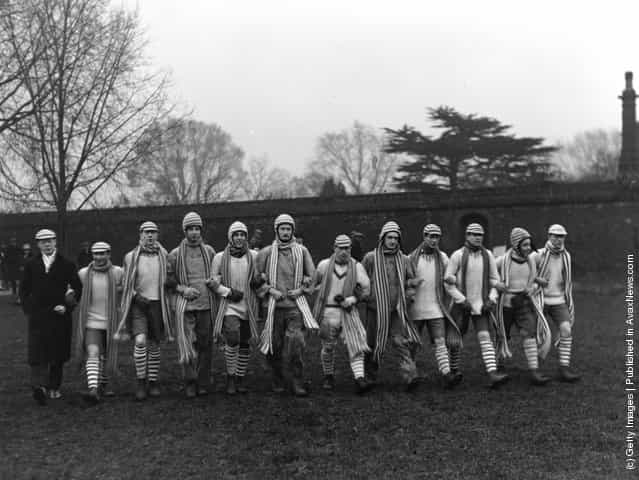
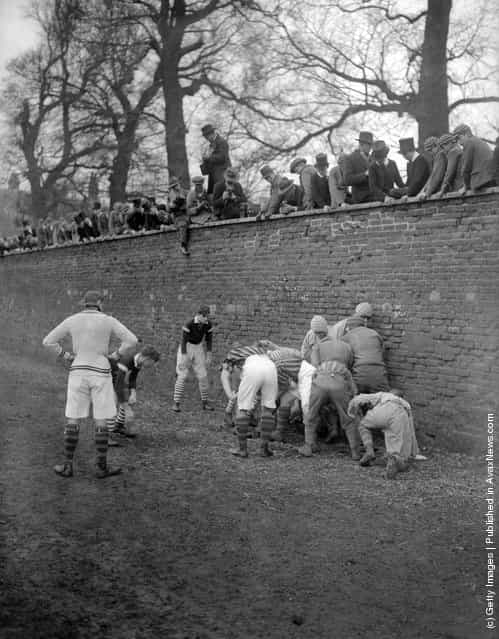
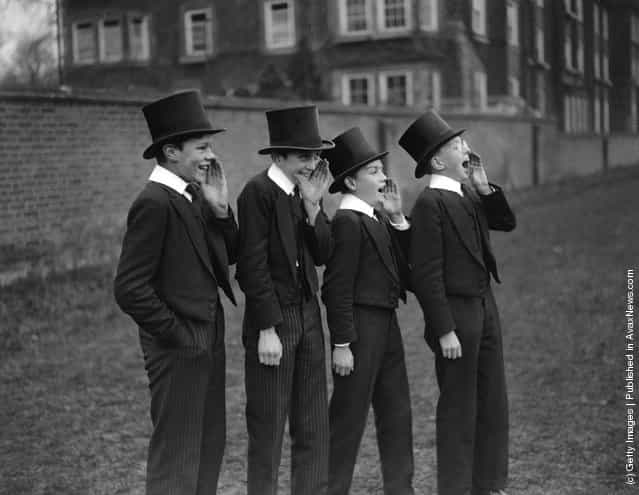
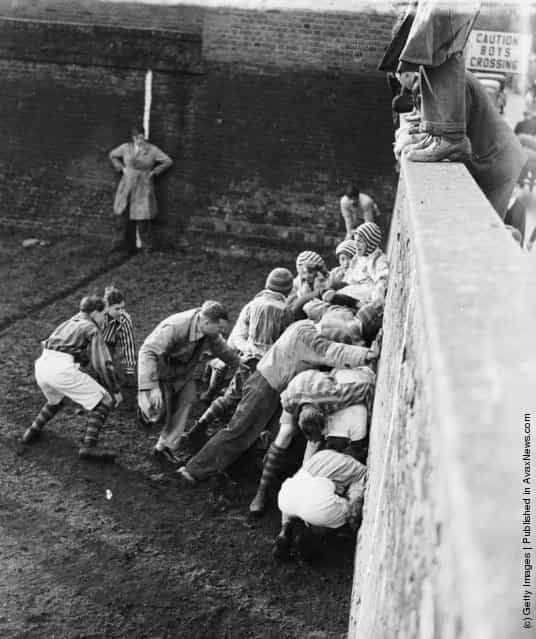
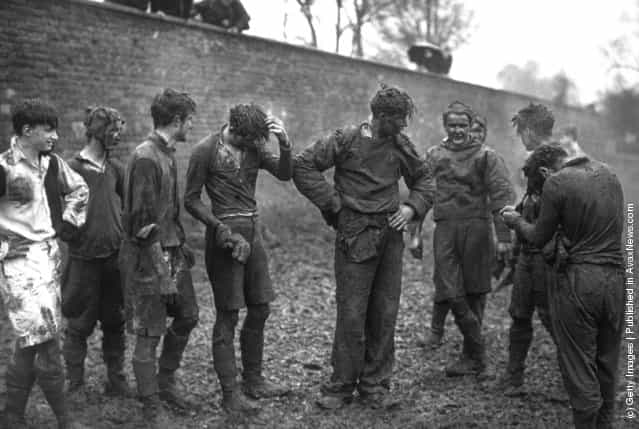
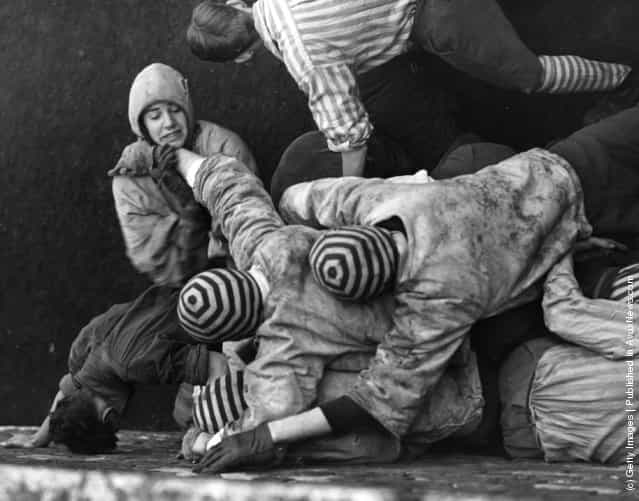

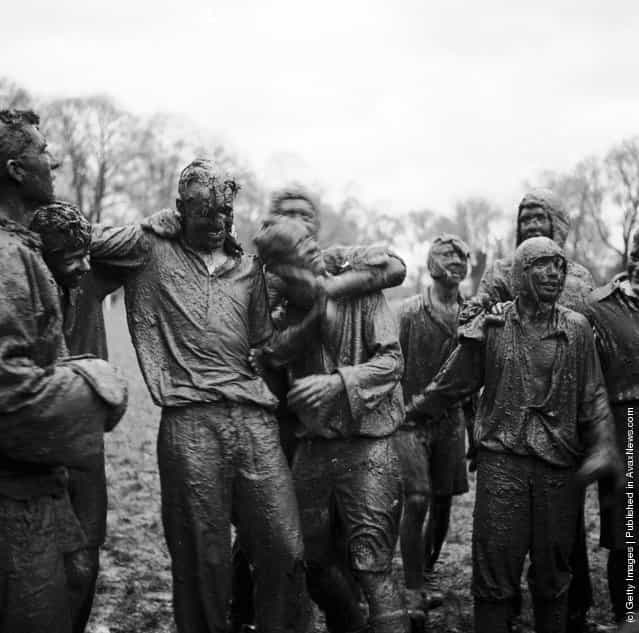
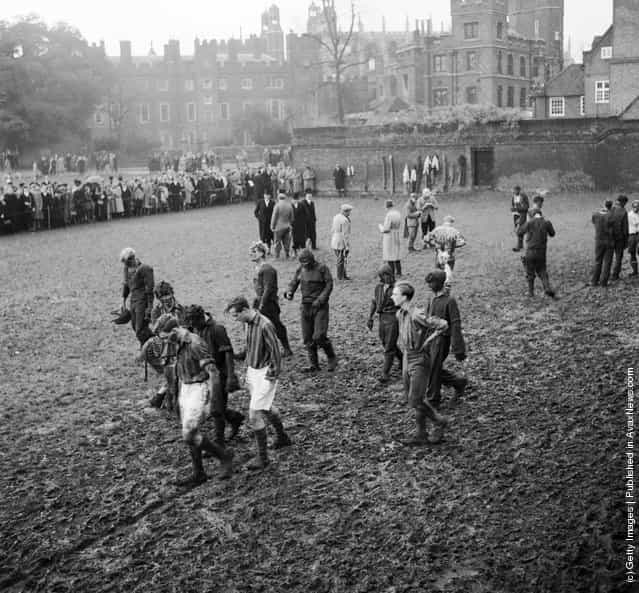
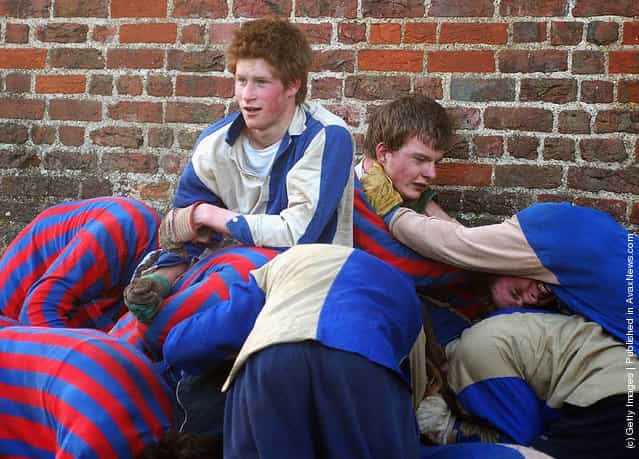
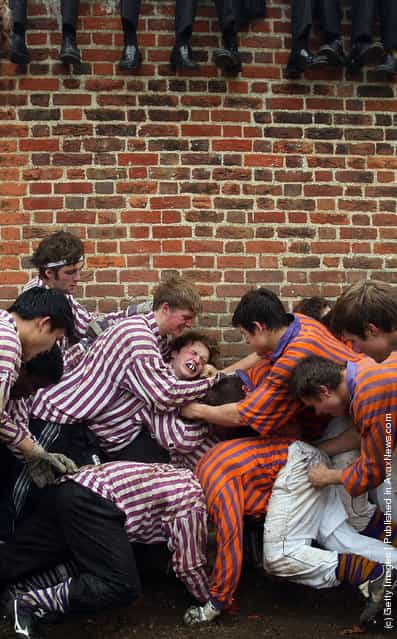

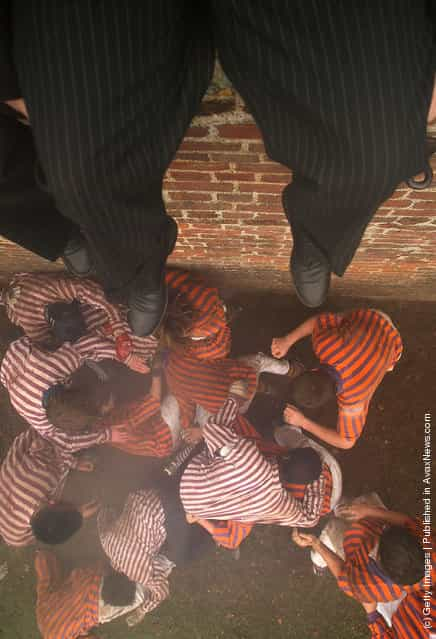
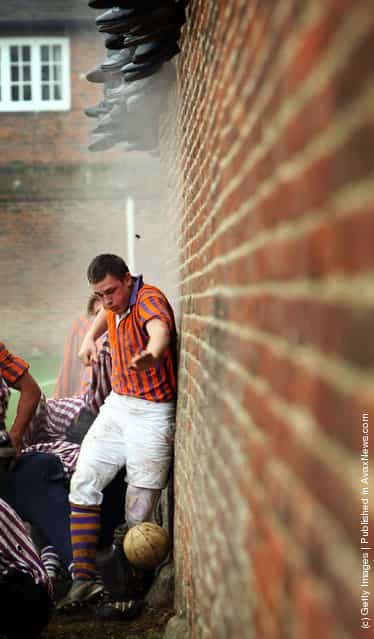


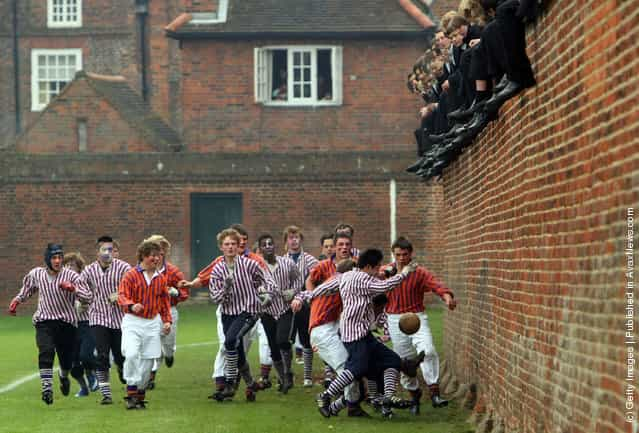

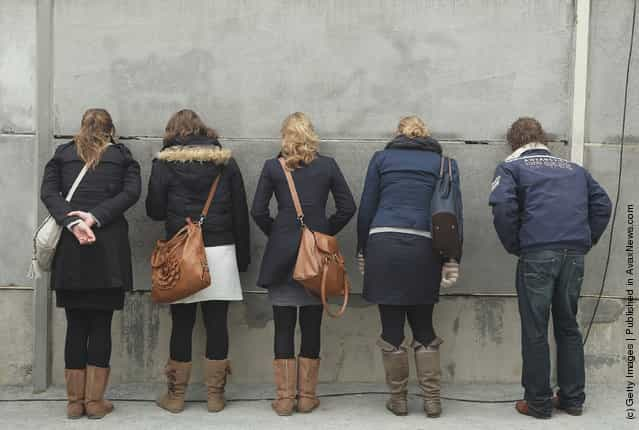

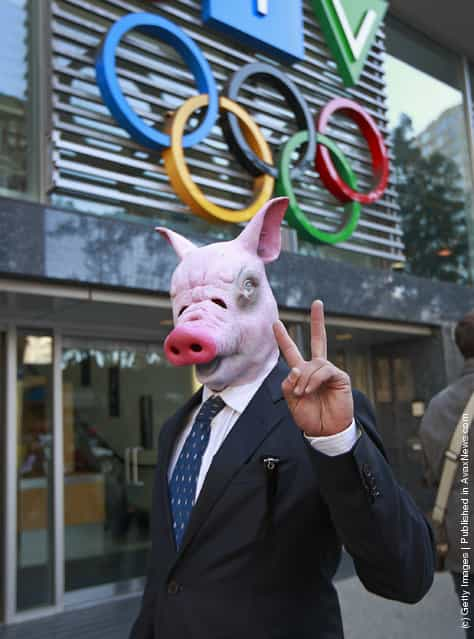
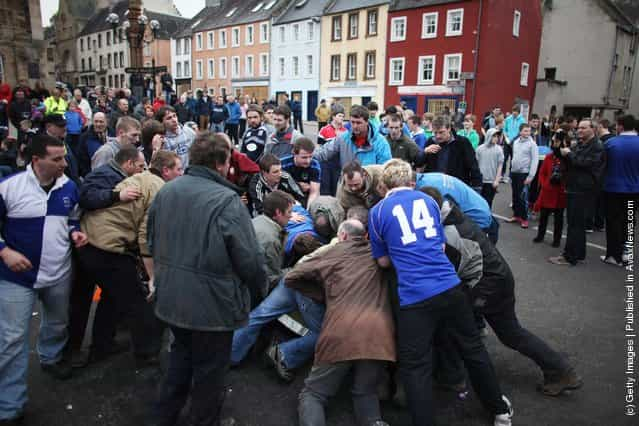
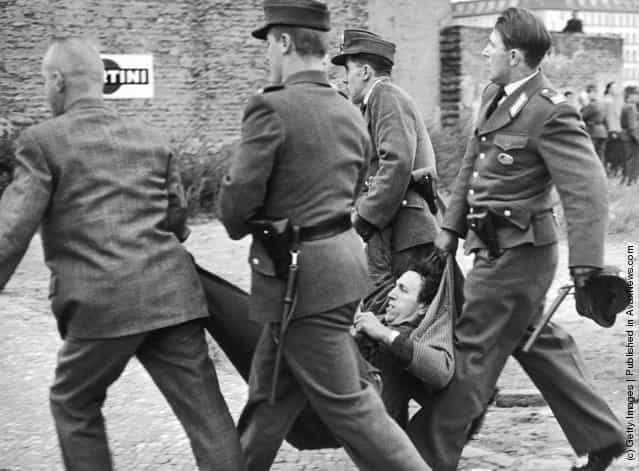
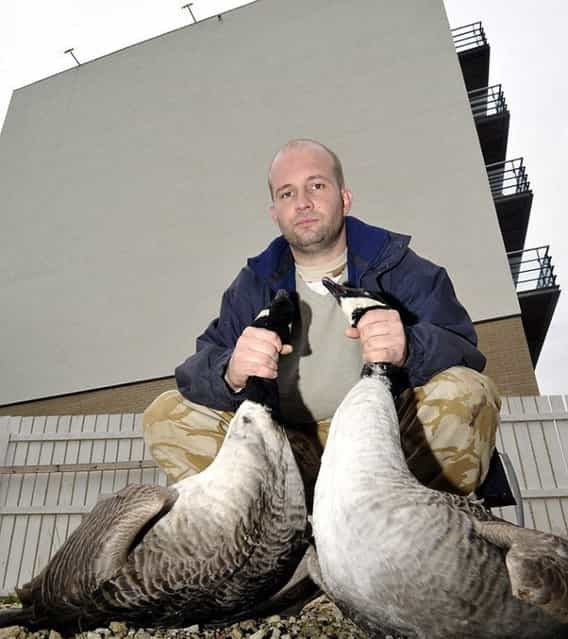


![Rare [Hybrid] Total Solar Eclipse Rare [Hybrid] Total Solar Eclipse](http://img.gagdaily.com/uploads/posts/fact/2013/short/00010c55_medium.jpg)






